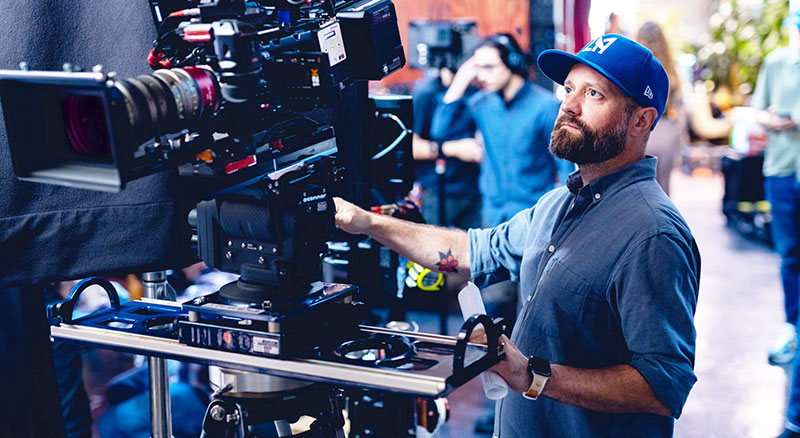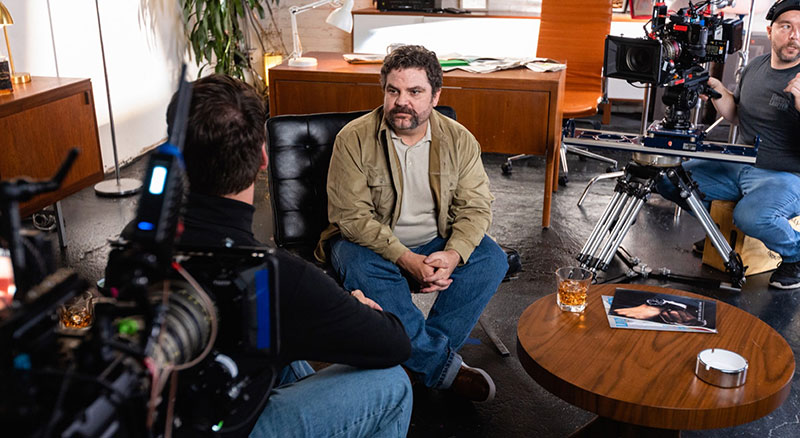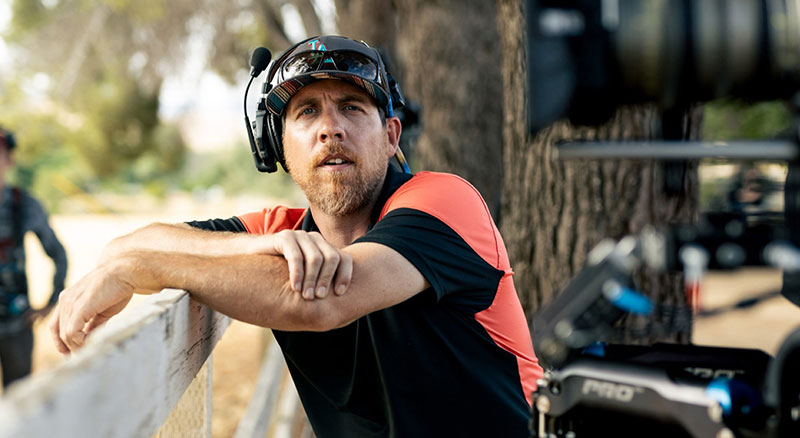1990s sci-fi mystery series returns to TV, shot on URSA Mini Pro 12K and Pocket Camera 6K Pro cameras, using Blackmagic tools from LUT development to on-set data wrangling to post.

Showrunner Holger Frick, co founder of Superama Filmproduktions GmbH, and Director of Photography Edward Salerno Jr. worked together on the unexpected sixth season of ‘Beyond Belief: Fact or Fiction’, a science fiction anthology TV series from the US that initially ran for four seasons from 1997 to 2002.
Starting in 2021, a fifth season was produced for the German market, where the show had gained a cult following. The fifth series was shot in Germany but the newest episodes for season 6 have been shot in and around Los Angeles and dubbed for German television.
The format of the episodes has remained the same since the first series. Within the course of one hour, five mysterious stories are shown. None of these stories have any logical explanation, and some of them actually occurred. Viewers are left to decide which of the stories, if any, are fact, and which are fiction, until the end of the show when the truth is revealed.
Here, Holger and Edward share their insights into the creative processes involved in the show’s production. “I connected with Holger Frick through a mutual acquaintance,” said Edward. "Later on, I went for an interview with him and his team, when I expressed my interest in and appreciation for the original series from the '90s. Shortly after that interview, I joined the production, and from there, we immersed ourselves in the visual narrative, never looking back."
Locations and Stories
“During discussions with Holger and director Ben Munz, we delved into the essence of what the original ‘90s show had captured. We carefully considered the visual aesthetics, shot style and camera movement with each director's distinct aspirations and objectives. In this way, each of the short stories had its own visual identity within the broader framework.”
Given the diverse nature of the shorts, each of which was shot within a day, the footage required adaptation to fit the individual stories' needs. Furthermore, the episodes featured numerous diverse shoot locations, each presenting its own opportunities and challenges. The project became a collaborative effort with Nick Ramsey, who had filmed Series 5 and returned to work alongside Edward.

Edward and Nick worked together to define the camera treatment and develop a guiding show LUT for image manipulation during post production. “I shared my approach to camera treatment for the season, detailing how I would use filtration to achieve various time periods and effects,” said Edward. “While I was in prep for the show's final weeks, Nick worked with another director during their eight day block.”
On another level, maintaining a cohesive look and atmosphere throughout the series was another key task. The team anchored its approach in the visual language of the original 1997 series. This involved using filtration, classic blueish moonlight and a specific level of haze, which, combined with accent lighting on props and set decoration, created a consistent '90s atmosphere.
Cameras and Shooting Style
Although they drew inspiration from the original series, they also gave themselves a chance to explore various shooting styles, including gimbals, Steadicam, zooms, handheld and dolly, choosing movements that best complemented the performances and emotional arcs of the characters and the respective stories.
They also had a new generation of cameras to negotiate. The decision to shoot with Blackmagic Design URSA and Pocket Cinema digital film cameras added a new dimension to the production, as well as deciding to shoot Blackmagic RAW with the constant bitrate encoding option. Edward said, “Our primary camera was the URSA Mini Pro 12K, complemented by Angenieux EZ 1 and 2 T2 Zooms and the Canon 30-300. We also used the Pocket Camera 6K Pro on a gimbal with Sigma primes. To achieve the look we were after, we employed various Schneider and Tiffen filters.”
Constant Bitrate
After testing to determine the ideal aesthetic for the show's visual style, and factoring in data management, storage and post production requirements, the production team chose to shoot at different resolutions. “For moments with integrated VFX and nighttime scenes, we used 12K with constant bitrate of 5:1, or 8K at 5:1. For general settings and daytime shots, we primarily used 8K at 8:1. We'd then adjust based on the high frame rate needs of each story,” said Edward.
When shooting Blackmagic RAW, going for a constant bitrate results in the best image quality possible with a predictable, consistent file size. In this case, bitrates are based on the unprocessed file size of a single frame from the sensor, which makes it easier to understand the relative amount of compression being used.

According to Holger, choosing the URSA Mini Pro 12K brought both creative and financial advantages. “The ability to shoot in 6K, 8K and 12K simplified many of our decisions on set, especially when framing shots on what was a very tight filming schedule. For instance, when filming the actor Jonathan Frakes, one of the show’s hosts in the early years, we didn't need to worry about retakes or using a B cam for close ups. Moreover, given our limited budget for an eight episode series, opting for Blackmagic cameras allowed us to allocate more funds to what appeared on camera.”
The pre production and testing phase lasted three days, covering aspects ranging from noise levels and exposure ranges to compression. After fine tuning in DaVinci Resolve Studio, the show LUT was completed for colour correction, seeking a consistent look throughout the series.
Handling Rushes On-set
Managing the rushes on set posed a considerable data management challenge for production, as they anticipated capturing up to 60TB of data over the 44-day shoot. Recognising the need to begin editing in Munich, where Superama is based, immediately on the start of shooting in LA, their team established a daily automated proxy delivery system.
Holger said that, while continuously backing up data on set, the Blackmagic Proxy Generator App ran concurrently. This app automatically creates and manages proxies from camera originals. By using a Blackmagic Cloud Pod to synchronize a watch folder with Dropbox, they were able to make sure that the material was always available to the team in Germany the following day, automatically converted into proxies in the right format, helping to speed up the editing workflow.
Blackmagic Cloud Pod network storage systems in three locations were responsible for managing the data, which in the end amounted to 55TB of RAW footage per episode, according to Holger. With a project library hosted on Blackmagic Cloud, Superama's team of editors, VFX artists and colourists collaborated within DaVinci Resolve Studio throughout production. www.blackmagicdesign.com




